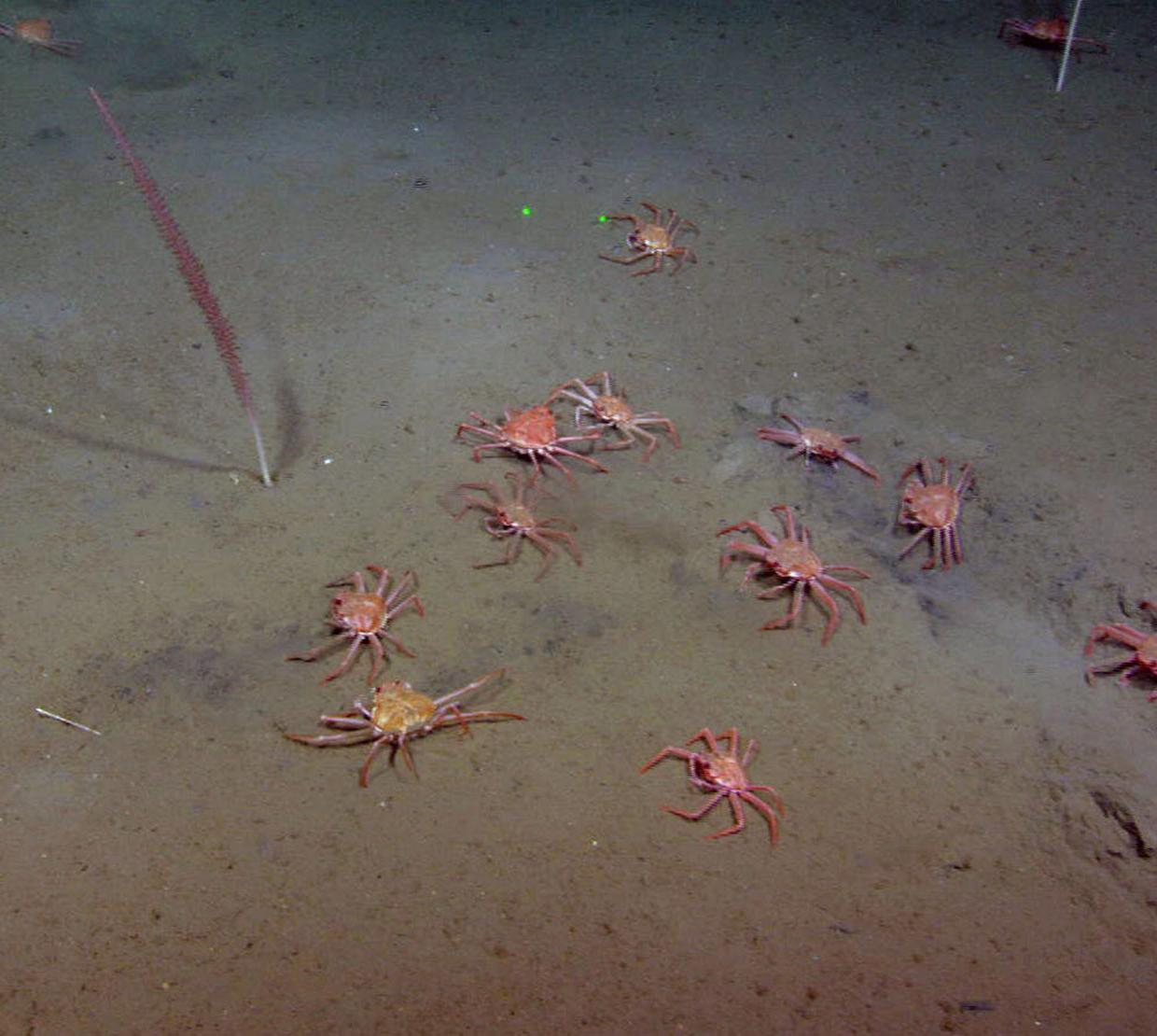Microbiologist and marine ecologist Andrew Thurber and colleagues have documented a group of tanner crabs vigorously feeding at a methane seep on the seafloor off British Columbia – one of the first times a commercially harvested species has been seen using this energy source.
There are many implications, researchers say, and surprisingly most of them are good. Human consumption of tanner crabs – one of three species sold as snow crabs – that feed on methane-eating bacteria and archaea should not pose a health concern because methane seeps are not toxic environments.
The discovery actually may mean that methane seeps could provide some seafloor-dwelling species an important hedge against climate change – because nearly all models predict less food will be falling into the deep sea in coming years.
Thurber co-authored the study, which was just published in the journal Frontiers in Marine Science.
“The thinking used to be that the marine food web relied almost solely on phytoplankton dropping down through the water column and fertilizing the depths,” said Thurber. “Now we know that this viewpoint isn’t complete and there may be many more facets to it.
“Tanner crabs likely are not the only species to get energy from methane seeps, which really haven’t been studied all that much. We used to think there were, maybe, five of them off the Pacific Northwest coast and now research is showing that there are at least 1,500 seep sites – and probably a lot more.
“Methane may be a very important and underappreciated energy source for marine organisms. Unlike plankton, it doesn’t vary much with the seasons and seeps are thought to last hundreds of years.”




